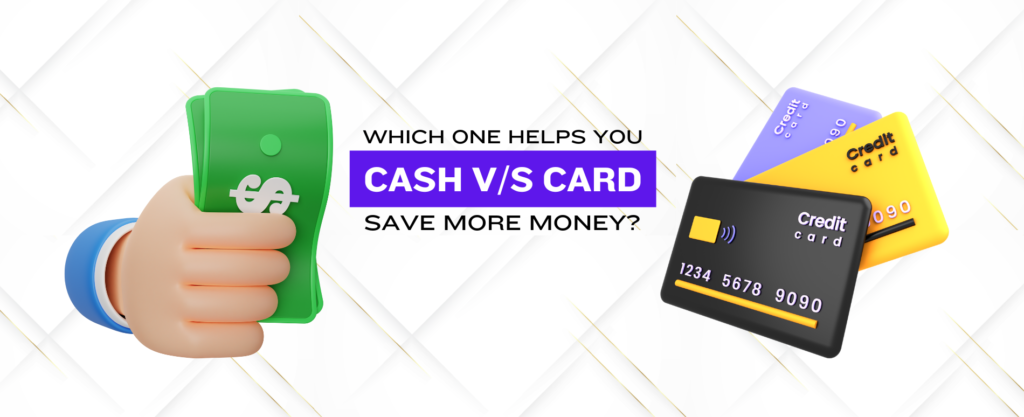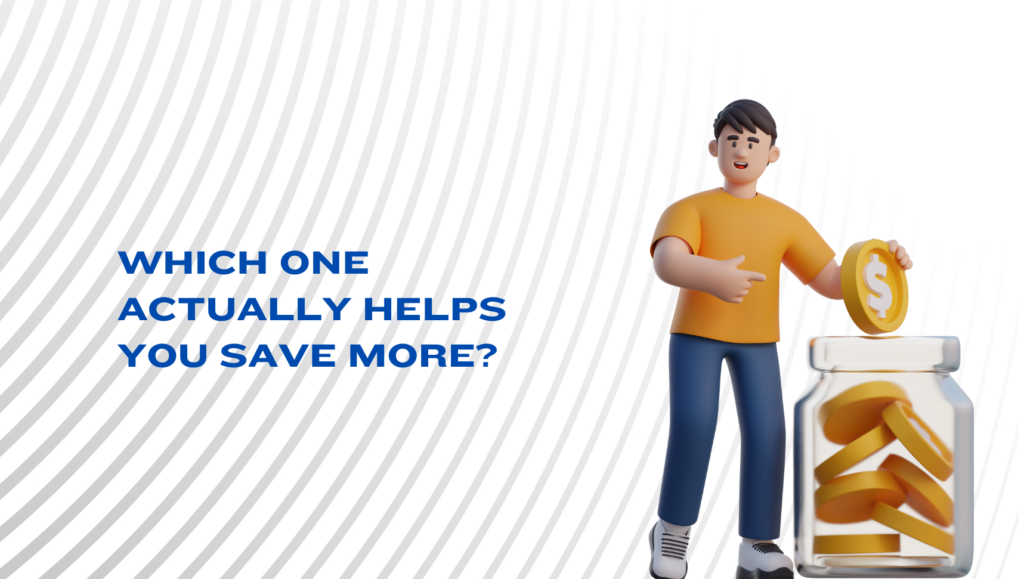Cash vs. Card: Which One Helps You Save More Money?

Have you ever wondered why money seems to disappear faster when using a card? The way we spend is deeply influenced by psychology. When you hand over cash, you physically see the money leaving your hands. This creates a sense of loss, making you think twice before spending. On the other hand, swiping a card feels effortless. The transaction happens instantly, and you don’t feel the weight of spending until later.
This difference in perception plays a huge role in money habits. Many people struggle with overspending simply because card payments make it easier to lose track. However, the real question remains: Which method actually helps you save more? Let’s break it down.
Why Cash Helps Control Spending
Ever noticed how spending with a card feels effortless, but parting with cash makes you think twice? That’s psychology in action. When you physically hand over money, you feel the loss, making each purchase more intentional.
Imagine walking into a store with just $50 in cash. Every dollar spent is a conscious decision because there’s no backup card to cover impulse buys. This natural spending limit makes cash a powerful tool for budgeting. While digital payments offer convenience, cash remains one of the most effective ways to control expenses and avoid overspending.
- Prevents Overspending: No backup funds mean fewer impulse buys.
- No Hidden Fees: No interest rates or transaction charges like credit cards.
- Increases Awareness: Studies show people spend less when using cash because they feel a stronger emotional connection to their money.
However, relying solely on cash has its drawbacks. Carrying large amounts can be inconvenient and risky. It also makes tracking expenses difficult since there are no automatic records. This is where a money manager app can help by keeping track of cash transactions effectively.
The Convenience and Risks of Card Payments
Card payments have revolutionized the way we spend, offering speed and security that cash simply can’t match. Whether shopping online, paying bills, or making quick purchases, using a card is effortless. However, this ease of use comes with both advantages and risks.
- Effortless Transactions: Cards make payments seamless, whether online or in stores, offering cashless convenience.
- Rewards & Savings: Many cards provide cashback, discounts, and rewards, helping you save money when used wisely.
- Digital Tracking: Every transaction is recorded, making it easier to budget, track expenses, and analyze spending patterns.
- Credit Score Boost: Responsible credit card usage helps build a strong credit score, which is beneficial for securing loans and financing major purchases.
Despite these benefits, card payments can encourage overspending. The effortless nature of swiping or tapping removes the psychological pain of parting with money, making impulse purchases more common. Additionally, if balances aren’t paid on time, credit card interest and late fees can add up, leading to financial stress. To avoid this, responsible usage, setting spending limits, and tracking transactions using an expense tracker app can help maintain control.

Which One Actually Helps You Save More?
When it comes to saving money, both cash and cards have their advantages. The best choice depends on individual spending habits and financial discipline. While cash naturally limits spending, cards offer rewards that can be beneficial when used wisely.
- If you struggle with overspending, cash enforces stricter control by limiting purchases to the money you physically have.
- Cards, when managed well, provide cashback, discounts, and other perks that can lead to savings over time.
The key factor isn’t just the payment method but how well you manage expenses and stick to a financial plan.
Rather than focusing solely on cash or card, tracking your expenses is the most effective way to save. A structured budget and smart financial habits play a bigger role in financial stability. Using a finance management tool like DollarBook can help you monitor transactions, analyze spending patterns, and ensure you stay on track with your financial goals.
Finding the Right Balance for Your Finances
Rather than relying solely on cash or card, a balanced approach can help maximize financial stability. Using both wisely allows you to enjoy the benefits of each while minimizing risks. The key is knowing when to use cash and when a card is the better option.
- Cash works well for everyday expenses like groceries, dining out, and small purchases, as it builds spending awareness and prevents overspending.
- Cards are ideal for fixed expenses such as bills, subscriptions, and emergency payments where convenience and security matter.
- Setting spending limits is crucial – allocating a specific cash amount for weekly expenses can prevent unnecessary purchases.
- Monitoring card transactions through money management tools ensures digital spending stays within budget and avoids unexpected debt.
By creating a smart balance between cash and card payments, you can take control of your finances while enjoying the advantages of both. Pairing this strategy with a budget management system helps ensure financial stability, allowing you to plan, save, and spend wisely.
Smart Money Habits That Work for You
At the end of the day, financial success isn’t about cash versus cards-it’s about making smarter choices. Regardless of the payment method, sticking to a planned budget is what truly matters. Identifying spending patterns, setting savings goals, and tracking expenses effectively will lead to better money decisions.
An expense tracker app like Dollarbook that works for you will help create financial stability. Whether you prefer the control of cash or the convenience of a card, being mindful of spending habits is the key to long-term savings. Take control of your money today, and watch your savings grow!
